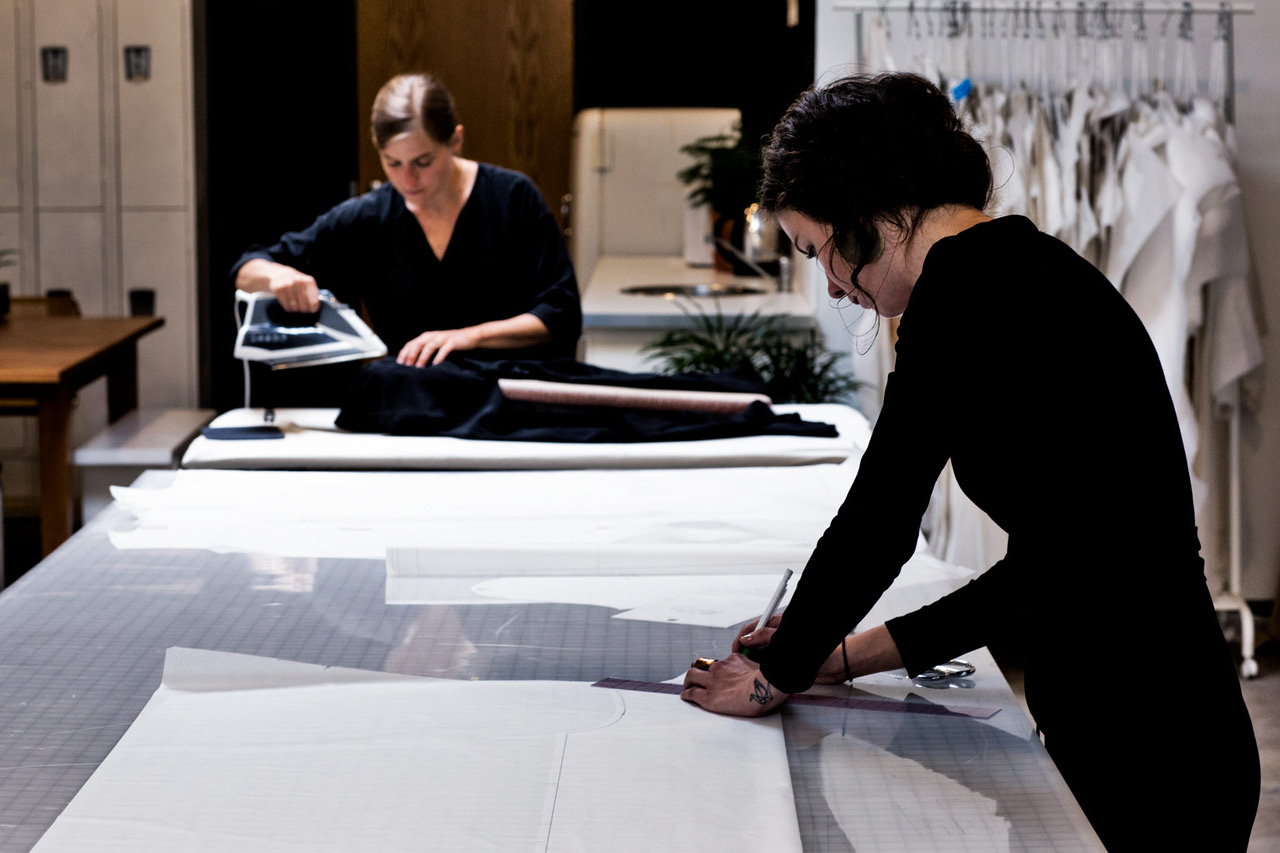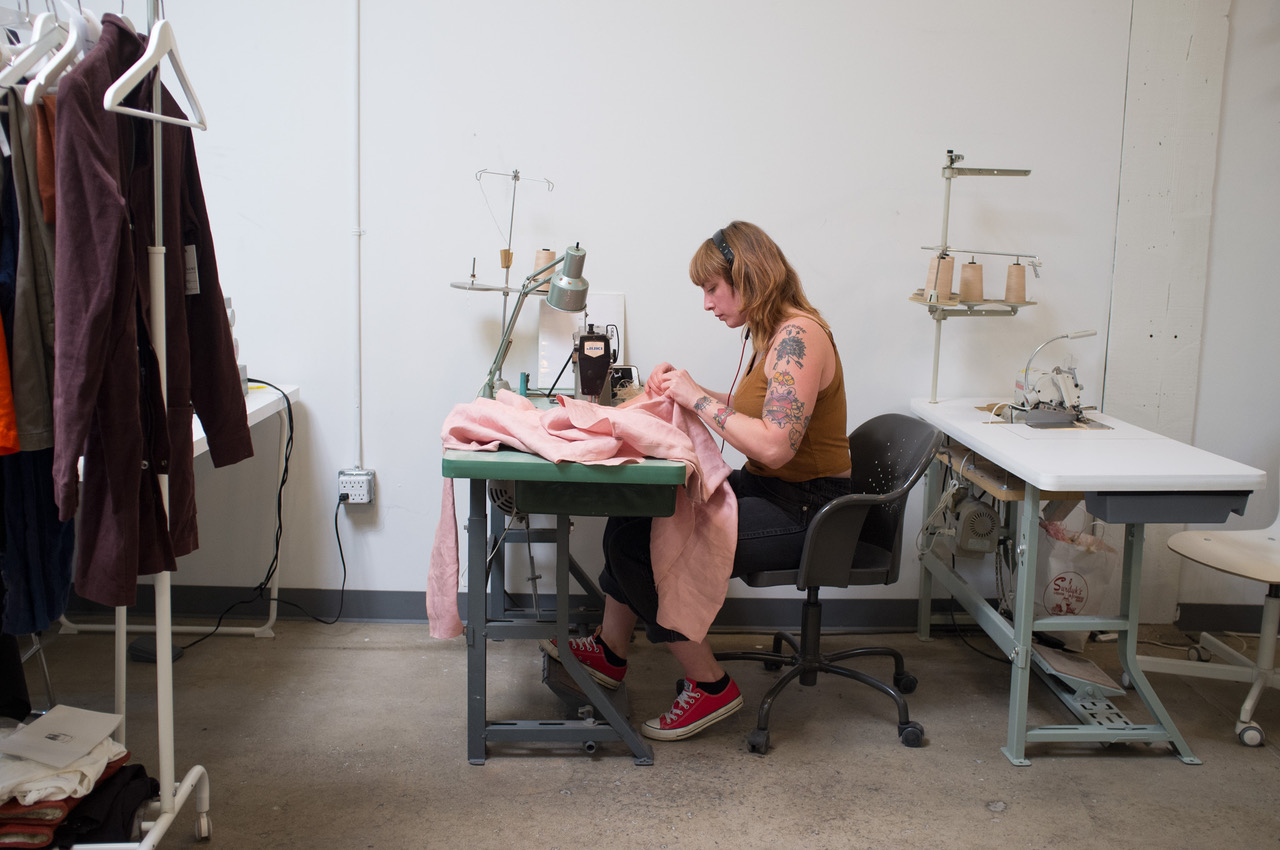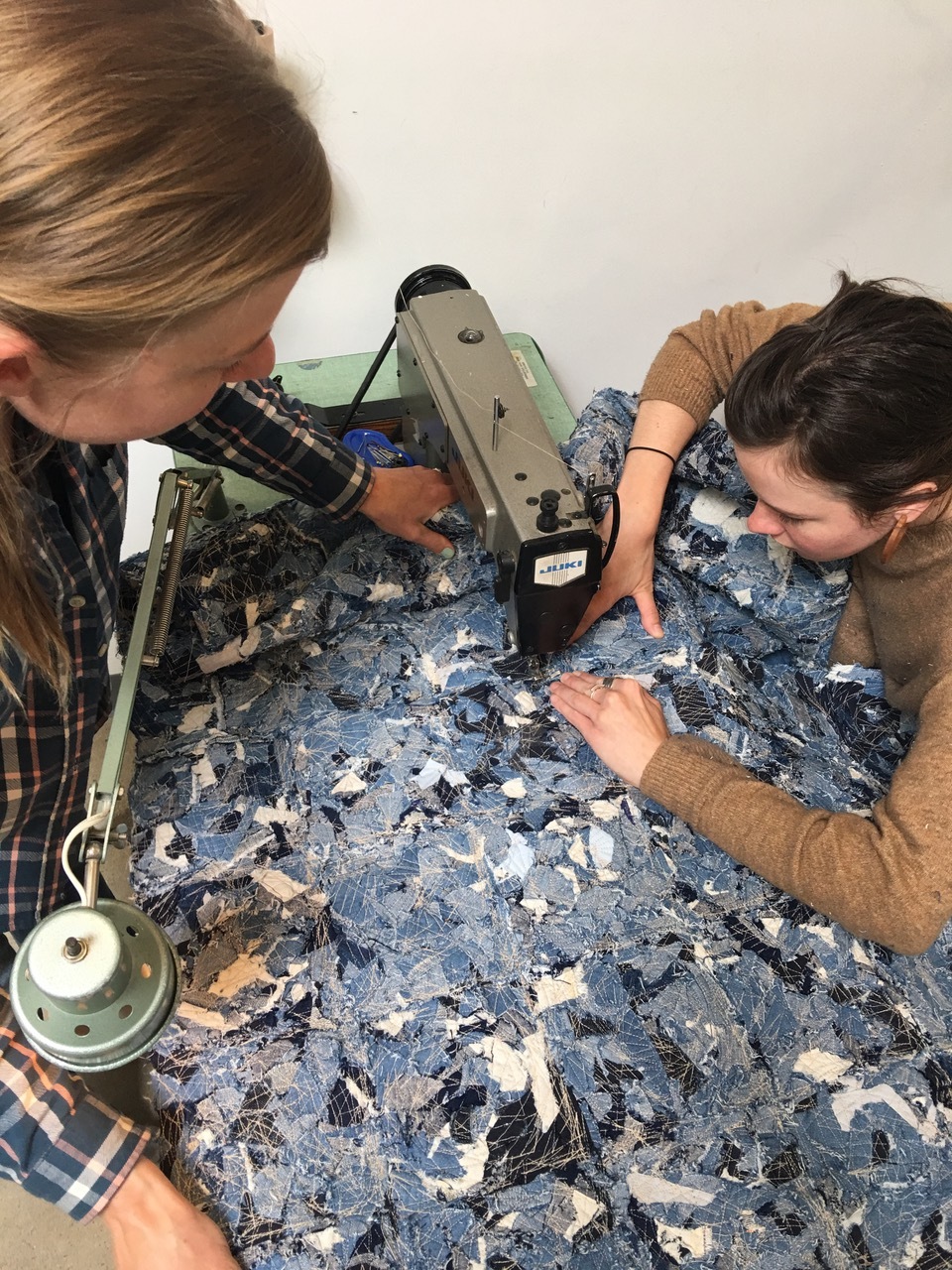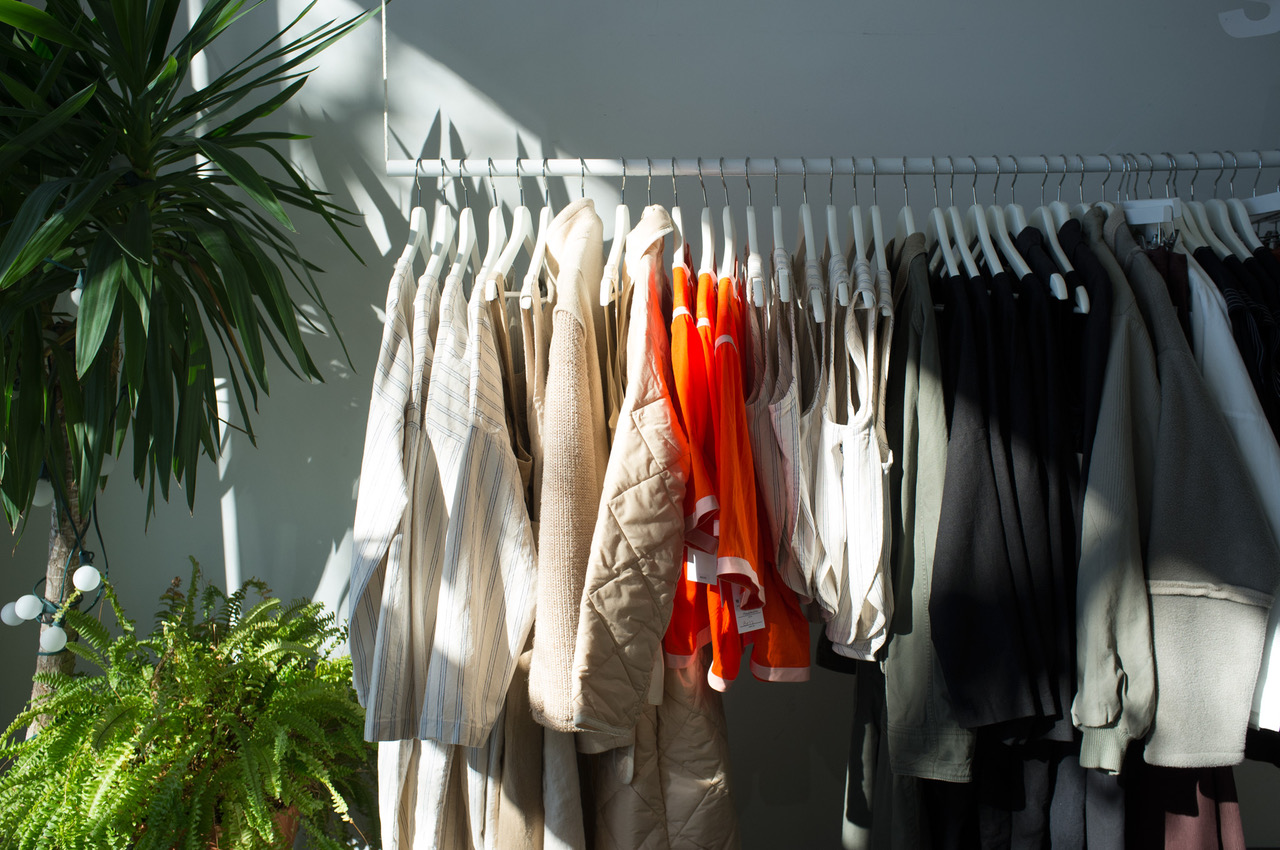The Creativity and Complexity of Zero-Waste for Small Fashion Brands with Kathryn Sterner
Designer Feature: Kathryn Sterner | Winsome Goods
Hey Kathryn, we are so excited to get to know you and how you came to start your brand, Winsome. Let’s start by sharing a bit about your background.
I often start with how I got interested in clothing and fashion, but it really starts with how I found my way into design in general. I truly believe it was a combination of my dad being a scientist and my mom being an artist, with design being a combination of those two. I have always been interested in the arts and creatively minded. Growing up, I was inspired by watching my mom work as an unbelievably talented illustrator and watching my dad, as a scientist, with one of the most important jobs that you can play in the world. Design was a perfect balance between the two.
My grandmother was the first person who put me down in front of a sewing machine and introduced me to sewing and crocheting. After that I continued to teach myself how to make my own garments and I would make garments for friends. At one point I made 7 prom dresses in one year!
So when it came time to apply for colleges, I knew that I was going to apply for school because my dad was a professor and it felt like the thing I should do. While I wasn’t particularly interested in attending college, I wanted to take advantage of the path and privilege I had in front of me. There was a brief moment where I humored being an art teacher, but ultimately I knew that apparel design and fashion design was unquestionably what I always knew I was going to do.
After graduation, how did you path lead you to start Winsome Goods? Was starting your own company always in the back of your mind?
When I got into the design program at the University of Minnesota, I was able to supplement classwork with participating in fashion and art outside of school. This was a perfect balance for me.
After graduation, I continued to participate in fashion shows in Minneapolis, I did sample making for independent designer, all while continuing to build on technical skills and peek behind the curtain of what it takes to run a small brand and clothing production. I will often go in 110% into something and at this point I had burnt out so badly that I ended up applying for a large retailer and had the exact opposite experience.
I was then working for this giant corporation on a large team of highly skilled designers, but ultimately I started to feel all these ethical and moral concerns that I had been raised with. Watching my dad as an environmental scientist. I have never been able to just do without thinking about the entire picture and the full circle. I started to not feel great about what I was doing there, and the 9 to 5 started to wear on me.
So, I started to find opportunities for creative space outside of my job. I joined a group of friends who were looking for studio space and were interested in starting an arts collective. I joined the studio space and started to think right away about how my work could have greater meaning and purpose. I couldn’t just make something without knowing how it’s going to contribute to the world. So I started Winsome.
For the first year and a half it was just me. It started as a creative outlet and feel motivated and energized in the environment. Whenever I had time and energy I would create. I was going through a lot of changes in my job and personal life, which ultimately led to leaving my job. I went in full time on Winsome and hired my first seamstress within six months.
You talked earlier about not being able to do anything without some kind of purpose or meaning. I am curious what are the values that have helped shape Winsome? Was sustainability always built in?
Sustainability has always been a part of my work. When I was in school, I had a clothing line under my own name, which utilized all sustainable fabrics — organic cotton, hemp fabrics, low-impact dyes. This was ten years ago, when the technology was poor, it was wildly expensive and hard to come by, people weren’t talking about sustainability yet. Now there are entire programs at Universities dedicated to this, but when I was in school I remember a few weeks in one of my classes we focused on these topics and I remember being intrigued and so curious about it.
When I started Winsome, I knew I wanted it to remain sustainability and ethically focused because I wasn’t thrilled about how the industry that I was working in currently chose to handle or talk about these areas. I was learning a lot about circular design and I knew I wanted to create everything in the studio. I also wanted to create a comfortable working environment not only for myself but for other people. I didn’t like the idea that creating clothing felt so stressful and wanted a space where creating something artistic and fun, why can’t making it also be artistic? My ideals of what I wanted a work life to be was my motivation to create it for others.
With everything in sustainability still being such a gray area, I am always trying to make the best decisions I can with the materials and knowledge and resources available to me. At first I started experimenting with deadstock* fabrics and discovered I loved working with natural fabrics. Now I am interested in shifting to using all deadstock*, regardless of types, over using new fabric.
“I didn’t like the idea that creating clothing felt so stressful. I found myself wanting a space for creating something artistic and fun ... asking why can’t making it also be artistic?”
How are you approaching sustainability now, four years later into your business? You have a new project you’ve recently launched?
We are always learning when it comes to sustainability, but the biggest project we have been working on is this ZERO collection. For the past two years now we have been saving all of our cutaway scraps from our production process, in an attempt to close that loop as much as we are capable of as a small brand. It was really eye opening to start to save these scraps and see how much waste there actually was when you start to save it and store it and you have to look at it everyday and have to find solutions for where to put it.
We were saving scraps with the idea that we wanted to use it all for something, but weren’t sure what, so we ended up working with first year apparel design students from the University of MN for a few weeks. They visited the studio and I got a chance to just chat with them about the business and they came up with ideas for what to do with these fabric scraps.
One group presented me this little bowl and I was so excited about it. They found this craft technique of taking fabric scrap and using a water soluble paper and creating essentially a new textile that feels very much like a felted material. And what is so beautiful about it is you can still see the scraps and you could still identify where these scraps came from and potentially what the content is and especially what the color is.
The idea that really made it sail over the fence was that was beautiful and interesting and it’s a technique that creates a product that is interesting aside from the story. I would want to own this product regardless of the fact that it’s zero waste and using scrap material. So they brought us this technique and we spent about a year working on it when we had time and energy but trying to figure out what products we could make. And so that’s how the zero collection was born. We are currently making area rugs and welcome mats out of this fabric scrap and reuse technique with the intent to be able to add on other items. That’s what we’re working on now.
Along with that, it would be even more wonderful if we could get to a place where we could begin to accept scraps from other companies. We’ve already begun to accept a small amount of scrap from vintage sellers who cut the pants on denim, so they have all of these denim cuffs that we accept so they don’t have to throw them away. Instead they can put them into rugs. I could talk about it forever, but there’s just so many possibilities in this realm.
As a designer, what was one of the key things you learned from working on ZERO?
Honestly, one of the first that comes to mind - and it goes hand-in-hand with business ownership - is how much somebody is willing to pay for something. While the material is, with all intents and purposes, free, the technique and the labor involved is very intensive. The area rug takes approximately twenty-five hours to put together. So one of the challenges of taking this technique and applying it to product is that at what point is it just too expensive for someone to want to spend their hard-earned money on? I think that often when any individual or designer thinks about creating a simple product, the first thing that comes to mind is bags and tote bags, but does the world need anymore tote bags? Probably not. Does anyone need a tote bag that they have to spend $190 on? Definitely not. We have to kind of weigh, what is a product that people really want to invest in that would justify the cost this would need to be in order to actually pay people an appropriate wage to create that thing.
I know that is a big learning curve for a lot of sustainable designers in general - communicating that cost per wear or communicating the value behind the product you are creating. I’m curious how you talk about sustainability to your followers, to your friends, how do you live that value through your social media?
I think it’s something that will always be a learning process and I think I’m even still trying to figure out how to do that. I think what’s nice about being able to talk to people is that every individual is different, they all have different values, they all have different degrees of knowledge and interest, and so being able to figure out what people’s values are and what people are interested in and adapt a conversation for that person or that audience.
I want to create beautiful clothing and beautiful product that people want, regardless of the story, but if people want the story and want to know where it’s produced, they want to know where it’s coming from and what that whole cycle looks like, then that’s great and I’m here for it.
“I want to create beautiful clothing and beautiful product that people want, regardless of the story, but if people want the story and want to know ... what that whole cycle looks like, then that’s great and I’m here for it.”
What are some of your biggest challenges as a designer and small business-owner? How does sustainability play onto that?
Money and cost, over everything. I mean, our profit margin is so slim. It’s part of being a small business, in an unstable environment. Both actual weather environment here in Minnesota but also the cultural environment that we’re in. It’s rocky and there are waves and it’s the most challenging aspect of the business, for sure. There are many sustainable options in textile and fabric, but within those options there are only so many that we can afford. This is how I understand how people can get into hot water and begin to ignore their values. There are your ideals and what you want to do but also what you can afford.
So my mantra to myself in this business is that if I can’t do it right I don’t want to do it at all. It’s a thought that I return to all of the time - like what do I do in this moment? There have been many moments when I’m at a crossroads with do we continue with our values and what is important to our business or do I take the less expensive, easier route out and hope that things come together in the end. Instead of just deciding and acting immediately, taking that breath has helped identify other paths to make good and right decisions.
Leading with your values and constantly questioning not only what’s ethical but what fits your sense of right and says a lot about you as the leader of a brand in this movement towards circularity. What do your think is going really well in this new movement of “sustainable fashion” and what do you love most about this movement?
I think what’s going really well is that there’s more effort behind improving technology because it’s a part of mainstream conversation and culture now. I’ve been so interested, especially while working on this ZERO project, in learning about actual recycled fibers. I think it’s exciting to see some of these larger companies are exploring recycled fibers, because while it’s fun for us to be doing these sustainable and ethical things with our business, we are a drop in a bucket.
When I hear about companies like H&M using recycled fiber content in their garments, it’s like, okay, I don’t love you as a company, but if you’re going to be a company, do that thing and move in that direction. It’s exciting to start to see these fast fashion retailers start to make more sustainable decisions, which do have a greater impact that me and several other smaller businesses combined. So it’s bittersweet, and complicated. It helps me to recognize and identify that this issue is huge, and it’s so much bigger than me or than Winsome and this small designer community. Bigger efforts are being made, and need to be made, in order to create a world where we are making this closed loop system.
What would you say to future designers interested in sustainability? Do you have any wisdom or advice for someone who is just starting their brand?
Honestly, pick your top 3 priorities, and identify not just the bucket, but what is priority number one, priority number two, priority number three, because money, especially as a small brand, is going to be a challenge. For me number one is ethical fashion. Number two is sustainability. So, if I am posed with the problem of having to choose something that is either going to have a negative impact on my employees or it’s going to have a negative impact on the fabric that we are using or on some sustainable aspect of the business, I am always going to choose my employees first. It helps to just make those decisions because it’s reality.
There’s never 100% perfect or 100% right decisions, you are going to be faced with difficult decisions. You have to just be open and honest about that. I try to be as honest as I can about how I am always going to prioritize the wellbeing of our gals over absolutely anything else. So, people can shop here knowing that we care about the safety and security and wellbeing, then great. We are going to make sustainable decisions when we can, it’s priority number two. Out of the grand scheme of things that’s pretty good. It helps me not to get stuck in indecision in this moment with what is right and it just helps me to keep moving forward in the best way that I possibly know how.
When you’re thinking from your design lens, what are you inspired by, how does sustainability play into how you design? How do you remain playful throughout your design process?
Within design, the way that we approach sustainability is in two ways - one is that clothing can still be super unique and special and feel different and artistic AND be sustainable. I don’t need to create another simple, classic wrap dress in order to be a sustainable company. Not that there’s anything wrong with wrap dresses. We definitely have our own aesthetic and I try to cultivate that audience.
I also design garments whenever possible to be worn many different ways - make them reversible or transitional, to give people the option to play with it a little bit and own fewer items while still getting different ways to wear it around. Once you burnout of wearing a dress or once you don’t like that style anymore, it gives just another way to incorporate it without having to get rid of it and try something new.
Where do YOU get your inspiration? What cultivates those really unique elements of Winsome?
This is always the most difficult question for me to answer. The honest answer is, I don’t know. All over the place. I am in fashion design but my number one interest has never been fashion. I don’t follow a lot of high-end designers or fashion culture. It’s not what inspires me.
Individuals inspire me. Watching people try on clothing inspires me. That’s been the inspiration for how to wear things so many different ways - if someone goes into a dressing room undirected and they put something on, it’s not wrong if they don’t put it on the way that I intended them to. I love when people wear our pieces the way that works for them.
You can follow the design work of Kathryn at @winsome_goods and read more about the ZERO collection here. Explore clothing design and development by signing up for workshops!











